The History of Taekwondo
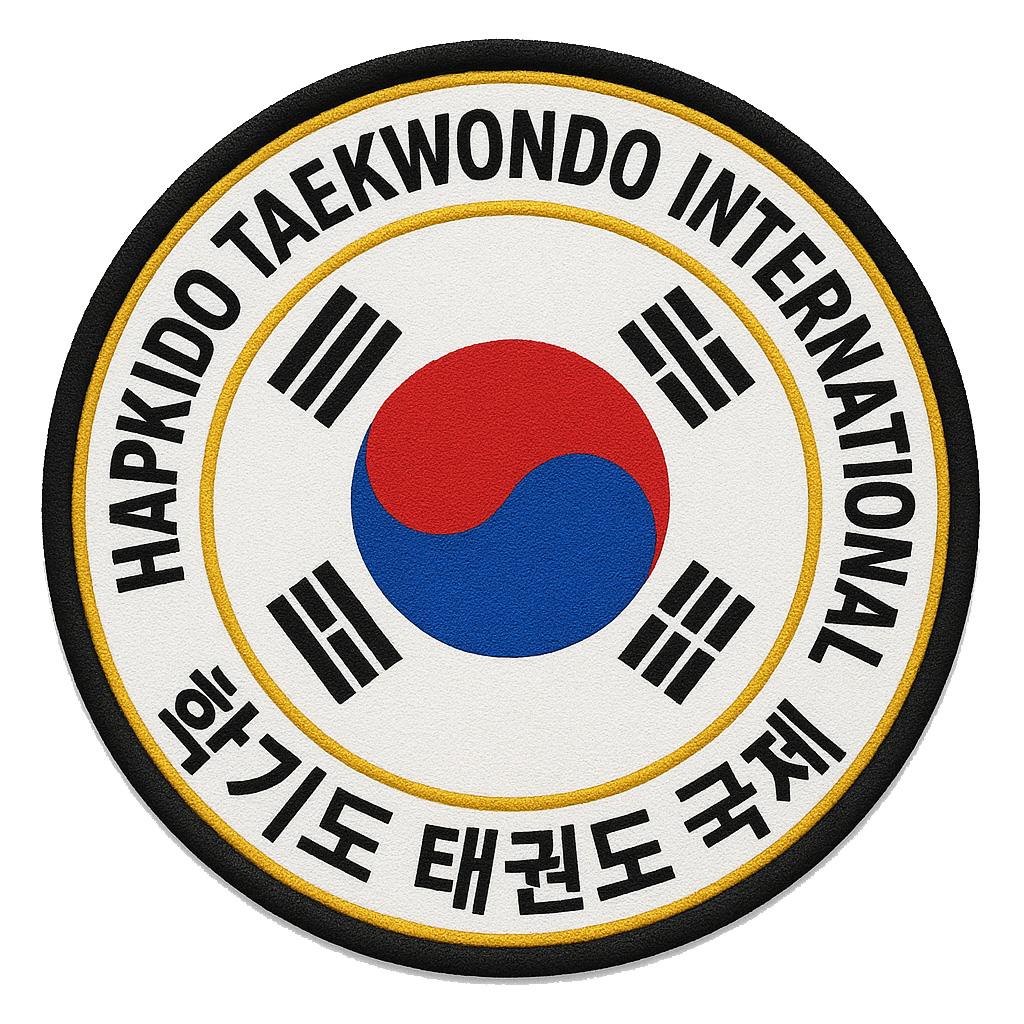

The History of Taekwondo
By Scott Shaw
Taekwondo, The Way of the Fist and Foot, is an advanced systems of martial arts known for its aggressive linear attacks and its refined elaborate kicking techniques. Taekwondo is the most practiced system of martial art in the world and was introduced as an Olympic Sport in 1984.
What is known as Taekwondo today, has gone through a long process of evolution since its inception at the end of World War II. In post war Korea, with brutal Japanese occupation lifted, Korea went through a period of cultural revitalization. During this process, the martial arts, which were banned by the occupying forces, found a new resurgence. The Korean people, who swore to never be over powered again, embraced the proliferation of the martial arts through out the nation. From this, came the birth of the modern Korean martial arts.
Chung Do Kwan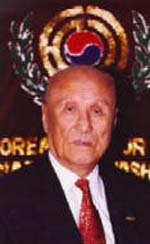
Chung Do Kwan was the first kwan or school of the modern Korean martial arts to be established on the newly liberated Korean Peninsula. The name Chung Do Kwan means, "The School of the Blue Waves." This represents a youthful spirit and vitality. The system was founded by Lee, Won Kuk and the school was located in Seoul.
Lee began his career in the martial art when he traveled to Japan in 1926, at the age of nineteen. He attended Chuo University. During his time at the University he be became exposed to Shotokan Karate and is said to have studied directly from the founder of the system, Funakoshi Sensei.
Lee eventually returned to Korea and began teaching the martial arts in September of 1944. The location of his kwan was at the Yong Shin School in the Suh Dae Moon Gu section of Seoul.
During the period of Japanese occupation it was virtually impossible for a Korean national to open a school of martial arts in their homeland. Due to Lee's close relationship with the Japanese Governor General of Korea, Lee was allowed to open his school of Karate. This led to widespread rumors and deep distrust of Lee that he was a Japanese sympathizer. In fact, upon Korean independence in 1945, Lee stood trial for his Japanese affiliations — which caused him to temporarily close the doors to his school. He was not convicted and upon his acquittal he became very proactive in his stance about Korean independence and formed a tight alliance with the Korean National Police. So much so, that when the Chung Do Kwan was reopened at Gyun Ji Dong, Si Chun Gyo Dang, Jong Ro Gu, Seoul, in April of 1946, it became referred to as the National Police Headquarters dojang.
In 1951, due to the age of Lee, Won Kuk , he asked Son, Duk Sung to take over as the Grandmaster of the studio, which he did.
Many of the Korean schools of martial arts were closed during the Korean War. Chung Do Kwan was no exception. It reopened its doors for the second time in 1953. By this point, however, the founder, Lee Won Kuk rarely visited the school. Son, Duk Sung and the instructors he either trained or respected became the primary instructors of the kwan.
There is an interesting fact regarding the Chung Do Kwan. Son, Duk Sung was the instructor who provided General Choi, Hong Hi with his 4th Dan certificate. Son, details that this was an honorary degree. He later canceled this certificate, and revoked Choi's honorary Kwajang (Grandmaster) status when General Choi sent him a 6th Dan certificate which he insisted that Son must sign. Son also expelled Nam, Tae Hi, from Chung Do Kwan during this same time period. Choi and Nam were the founders of the Oh Do Kwan, which will be discussed later in this paper.
As time progressed, several Kwans which derived their basis from Chung Do Kwan opened in Korea.
They include:
1) Kuk Mu Kwan, founded by Kang, Suh Chong,
2) Jung Do Kwan, founded by Lee, Yong Woo,
3) Chung Ryong Kwan, founded by Ko, Jae Chun,
4) Oh Do Kwan, founded by Choi, Hong Hi and Nam, Tae Hi.
Chosun Yun Moo Kwan — Ji Do Kwan
Yun Moo Kwan is one of the five original schools of martial arts established on the newly liberated Korean peninsula at the conclusion of World War II. The founder of this system was, Chun, Sang Sup.
The evolution of Yun Moon Kwan began in 1931 when, Lee, Kyung Suk, a Korean national who taught Japanese Judo, established the Chosun Yun Moo Kwan school in Seoul. Post World War II, Lee, Kyung Suk asked Chun, Sang Sup to set up a course of Kwon Bop at his school. Kwon Bop is the Korean name for Japanese Karate. This program was named, Chosun Yun Moo Kwan Kwon Bup Bu.
Chun, Sang Sup began his martial arts training in Judo while in high school. He then relocated to Japan to attend, Dong Yang Chuck Sik College. It is during this period that he was exposed to Shotokan Karate and is believed to have earned the Black Belt.
Upon retuning to Korea, Chun, Sang Sup is understood to have secretly taught Shotokan Karate to private students — beginning in approximately 1940. This is how the owner of the Chosun Yun Moo Kwan was aware of Chun. As this practiced was outlawed by the Japanese occupying forces, his teaching was not formally recorded until he established his training method at the end of World War II.
Chun, Sang Sup enlisted the help of Yoon, Byung In to teach at Chosun Yun Moo Kwan. Yoon was a 4th Dan in the Okinawan based system of Shudokan Karate — which was established by Sensei Toyama, Kanken.
Yoon, Byung In taught at the Chosun Yun Moo Kwan for approximately one year before breaking away and forming his own organization, Chang Moo Kwan. Chun, Sang Sup then took over full time teaching responsibilities. His teaching continued until an evil twist of fate found him kidnapped and imprisoned by the North Korean military during the Korea War. He was never heard from again and was eventually believed to be dead.
At this juncture, Chosun Yun Moo Kwan Kwon Bup Bu teaching passed to the hands of Yoon, Kwe Byung. He renamed the school, Ji Do Kwan, "Wisdom Way School."
Yoon, Kwe Byung was against unifying the various Korean schools of martial arts under the banner of Taekwondo. Like Kee, Hwang, the founder of Tang Soo Do Moo Duk Kwan, he wanted Ji Do Kwan to remain free from organizational control. This did not sit well with the other members of Ji Do Kwan, however, and Lee, Chong Woo was elected the new president of Ji Do Kwan.
Lee, Chong Woo forged the Ji Do Kwan into one of the leading schools of martial arts in modern Korea. Its practitioner were noted for their consecutive wins at South Korean sparring competitions. In addition, Lee has held several pivotal positions with the Korea Taekwondo Association and the World Taekwondo Federation throughout the years.
Ji Do Kwan pays tribute to its Shotokan (Song Do Kwan in Korean) and Judo influence in its emblem. This emblem depicts two circle. If the upper circle is removed, the central circle of the Shotokan emblem is reveals. The outer ring depicts the pattern of the Kodokan Judo emblem.
Presidents of Ji Do Kwan:
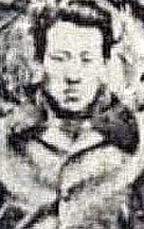 Founder, Chun, Sang Sup
Founder, Chun, Sang Sup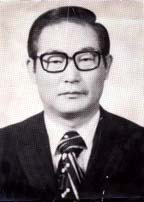 2nd President: Yoon, Kwye Byung
2nd President: Yoon, Kwye Byung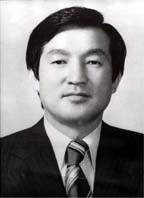 3rd and 5th President: Lee, Chong Woo
3rd and 5th President: Lee, Chong Woo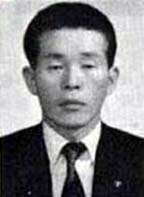 4th President: Bae, Young Ki
4th President: Bae, Young Ki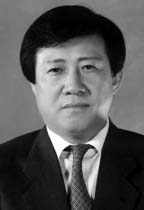 6th and current President: Lee, Sueng Wan
6th and current President: Lee, Sueng Wan
Moo Duk Kwan
There are two distinct schools of Moo Duk Kwan which evolved from a single source in modern Korean. The first is most commonly known as Tang Soo Do. The second is the Moo Duk Kwan division of Taekwondo. To understand how these two separate governing bodies came into existence we must first view the birth of this system of self defense.
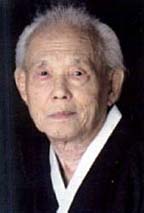
Tang Soo Do Moo Duk Kwan was founded by Kee, Hwang.
Kee, (Hwang, Ki Chang). Hwang was an expatriate of Korea during much of its Japanese occupation. He details that he initially studied the Korean arts of Soo Bak Do and Tae Kyon in his homeland before leaving Korea in 1936 to immigrate to China and work for the Southern Manchuria Railroad.
In early interviews, Kee, Hwang, states that he studied numerous systems of Chinese martial arts while living in China. He goes on to detail that, "At that time, in China, the instruction was not publicized like it is now. Most instructors introduced techniques to only a few people. Only people who would not misuse the knowledge they were allowed to study."
Later, it began to be detailed that he also studied a system of Karate while located in this region. Though none of this has ever been substantiated — which has lead to an enormous amount of debate as to where he actually came upon his advanced knowledge of the martial arts. None-the-less, he is one of the formative figures who directed the modern Korean martial arts towards worldwide acceptance.
Kee, Hwang formalized his system of self defense on his birthday, 9 November 1945. Post Korea Independence, in 1946, the system which was later to become commonly known as Tang Soo Do begin to be taught at the Yong San Railway Station in Seoul. It was called, Tang Soo Do Bu. The organization was named, Kyo Tong Bu Woo Hae.
The Korean term, Tang Soo, literally translates as, "Knife Hand." The Japanese character used to depict this term is the same one used in Kara-te.
Due to the fact that the first school of Tang Su Do Moo Duk Kwan existed within a railway station, many of Hwang Kee's first students were railway employees.
The school flourished for many years. Then, due to the Korean War, the school was closed on June 25, 1950. When it reopened, Kee, Hwang had changed the name to Moo Duk Kwan.
In 1953, Tang Soo Do Moo Duk Kwan began to evolve. It changed its official title to the Korea Soo Bahk Do Association. By 1955 this organization had ten gymnasiums with its central headquarters near Seoul Station in the Jong Gu section of Dong Ja Dong. During this same year, the Korea Su Bahk Do Association hosted it first Sino-Korean martial art championship.
In 1965, the various Kwans of the modern Korean martial arts were merging under the banner of Taekwondo. Kee, Hwang resisted this trend — wishing to maintain control over his organization. Due to this fact, two advanced students of Kee, Hwang: Im, Young Tek and Hong, Chong Soo broke away from their teacher, formed their own branch of Moo Duk Kwan, and became a part of the Korea Taekwondo Association. From this act two distinct systems of self defense bearing the title Moo Duk Kwan emerged.
The first president of Taekwondo Moo Duk Kwan was Lee, Kang Ik, elected on 20 November 1965.
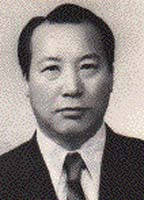
Hong, Chong Soo was elected the third President of Taekwondo Moo Duk Kwan on 27 July 1971. In February of 1974 he was appointed the Vice President of Kuk Ki Won. Many advanced instructors of Tang Soo Do Moo Duk Kwan followed the lead of breaking away from Kee, Hwang and became part of the Taekwondo branch of Moo Duk Kwan. Though the two Moo Duk Kwans are relatively similar in style and structure, and most Korean Moo Duk Kwan Masters draw their lineage from Kee, Hwang, the two Moo Duk Kwans possess differing forms and a somewhat differing focus upon self defense. The Taekwondo branch of Moo Duk Kwan does, however, possesses substantially more members, approximately five hundred thousand.
Moo Duk Hae
By the late 1970s Taekwondo Moo Duk Kwan, in its ongoing effort to congregate under the banner of the World Taekwondo Federation, renamed itself Moo Duk Hae. This was done in an effort to make the organization more of a fraternity and less of a martial art governing body. Though this name was formally adopted by its board of directors, few practitioner outside of South Korea know this fact, as most instructors who have foundational allegiance to Moo Duk Kwan still use this more commonly known name.
The Midnight Blue Belt
One interesting note is that Tang Soo Do does not use the traditional Black Belt in it's ranking system, as is common with the other Korean martial arts. Black is the color where all other colors merge. Any color which is mixed with black, also become black. For this reason, Kee, Hwang details that a person who wears a Black Belt believes that they are a master. The martial arts, however, are a continual learning process. Thus, no one can ever truly master the martial arts. As such, the Tang Soo Do practitioners wear the Dark Blue Belt.
Moo Duk Kwan Presidents:
• Hwang Kee
• Lee, Kang Ik
• Hong, Chong Soo
• Kim, In Seok
• Choi, Nam Do
• Hong, Chong Soo
• Kim, Dong Kook
• Chon, Jae Kyu
Chang Moo Kwan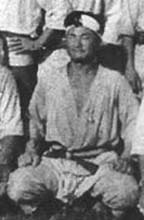
Chang Moo Kwan was founded at the YMCA in the Jong Ro section of Seoul in 1946 by Yoon, Byung In. During Japanese occupation, Yoon is said to have studied a Chinese system of self defense in Korea known as, Joo An Pa — more commonly known as, Chuan Fa. He then relocated to Japan to attend Nihon University. While there, he studied Karate under the direction of Kanken Toyama, founder of Shudokan Karate. It is claimed that he eventually earned the rank of 4th dan Black Belt in this system of Karate. It is also stated, in some documents, that he was the Captain of the Karate Team at Nihon University -- though there is no substantiated data to prove this claim.
Upon Korean independence, Yoon returned to his homeland and in 1946 opened the YMCA Kwon Bup Bu or Chang Moo Kwan. Initially, he had over five hundred students. But, his training method was so severe that it is rumored that less than two hundred students remain after only a few months.
Yoon, Byung In became missing-in-action during the Korean War. After the war, two of Yoon's senior students: Lee, Nam Suk and Kim Soon Bae reopened the school at the YMCA.
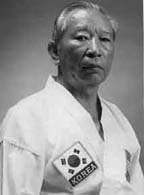
Important Dates in Chang Moo Kwan:
In 1946, Lee, Nam Suk was named the first official instructor of Chang Moo Kwan by its founder Yoon, Byung In. In 1953, he became the second president of this organization. From 1961 forward, he held several pivotal positions in the Korea Taekwondo Association, including Vice President.
Lee, Nam Suk was born in Yeo Joo, Korea, in 1925, When he was five years old his family moved to Seoul, where he was educated, eventually earning a degree in Electrical Engineering. He passed away in Southern California in late 2000.
Kang Duk Won
As the second incarnation of Chang Moo Kwan came into existence in 1953, Lee, Nam Suk and Kim, Soon Bae begin to have conflict with two other senior students of the kwan: Hong, Jung Pyo and Park, Chul Hee. These two men left and formed Kang Duk Won, "House of Teaching Generosity," in the nearby Shin Sul Dong district of Seoul in 1956.
Song Moo Kwan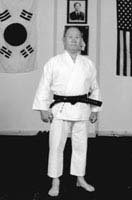
Song Moo Kwan was founded in Kae Sung City, Kyung Ki Providence, Korea by Ro, Byung Jick on March 11, 1944. As was the case with Chung Do Kwan, it was actually established prior to the end of Japanese occupation. The original classes of the kwan were taught at the Kwan Duk Jung, School of Archery.
Due to the repressive political conditions, the kwan was forced to close its doors a few months later. It was not until May 2,1946 when Ro, Byung Jick could reopen his school in Dong Hung Dong, Kae Sung City.
On June 25, 1950, Song Moo Kwan, which mean, "The Ever Youthful House Of Martial Arts Training," again closed its doors — as did most of the other kwans, due to the onset of the Korean war. On September 20, 1953 the school was reestablished in Ah Hyung Dong, Mapo Gu, Seoul.
Beginning in 1936, Ro, Byung Jick studied Shotokan Karate alongside Chung Do Kwan founder, Lee, Won Kuk, from its founder, Gichin Funakoshi in Japan.
Oh Do Kwan
Oh Do Kwan was founded by General Choi, Hong Hi and Nam, Tae Hi. Both of these men were advanced military officers in the newly formed army of liberate Korea. Their classes were originally taught at the Korean 3rd Army Base, Yong Dae Ri.
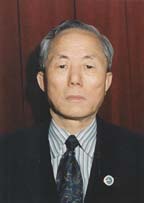
Choi, Hong Hi was born into a prominent Korean family. He relocated to Japan in his adolescence to further his education. While there he began to study Shotokan Karate and was eventually awarded the Black Belt. At the point when World War II broke out, he was forced into the service of the Japanese military. Post World War II and the defeat of the Japanese occupying forces, he became a pivotal figure in the newly formed Korean military.
Nam, Tae Hi became a student of Chung Do Kwan immediately after Korean Independence. He quickly became a master of the art and begin teaching at the Korean Army Military Signal School in 1947. During that same time period, Nam met Choi, who was a member of the of the 29th Infantry Division, based in Cheju Do. This laid the foundation for the Oh Do Kwan.
As the years progressed, in no small part due to General Choi's senior position in the Korean military, Oh Do Kwan became the central focus of the martial arts taught to the Korean Army. The rank of Black Belt was only accepted and transferable from student of Chung Do Kwan. Those practitioners who held Black Belts from other kwans had to be retrained and retested to be considered for official Black Belt status. This formulation at the hands of General Choi was questioned by many practitioners of the modern Korean martial arts. It, none-the-less, was the impetus of what brought the Korean martial arts together under the banner of Taekwondo.
The Other Kwans
It is essential to note that though the previously described kwans came into existence at the end of Japanese occupation and remained established schools of the modern Korean martial arts, there were at least eighteen other kwans that were founded just after the end of World War II but did not survive. In some cases the founder of the kwan merged his school with one of the other kwans. In most cases, however, the kwan and its founder simply faded from the pages of Korean history.
Taekwondo
The unification of the Korean kwans, congregating under one banner, began in the early 1950's, when the leaders of the various schools first began to come together and attempt to form a central governing body. Due to the outbreak of the Korean War, however, these initial attempts did not prove to be successful.
During this period of war, several kwan leaders who were living in the Korean wartime capital of Pusan, formed an alliance and vowed to created a governing body. These kwan leaders were: Lee, Nam Suk, Ro, Byung Jick, Kim, In Hwa, Jo, Young Joo, Yoon, Kwe Byung, Son, Duk Sung, Lee, Chong Woo, and Hyun, Jong Myun.
Post the Korean War, the kwan leaders joined forces and set about formalizing an organization. They named this governing body, The Korea Kong (Tang) Soo Do Association. The term Kong Soo Do was adopted due to the fact that this was the term commonly used to describe Kwon Bop (Karate) in the Korean language.
Due to the commonplace occurrence of Korean politics being deeply embedded into all aspects of Korean culture, the first President of the organization was, Jo, Young Joo, the head of the Association of Korean Residents in Japan. He was soon followed by a new president, The Republic of Korea Minister of Finance, Lee, Joong Jae. Ro, Byung Jick was elected its Director and Lee, Chong Woo the Secretary General.
The focus of this organization was to provided a standardized system of testing. As each kwan leader had their own system of teaching and testing, this proved to be problematic. None-the-less, the first two testes were given at the Central Dojang of the Chung Do Kwan, which was actually located in the Si Chun Church, when it was not in use for worship. The next two testes were given at Chae Shin Bu Dojang.
At this point in time, the rank of 4th dan was the highest degree awarded by the Korea Kong Soo Do Association. This rank was given to the early kwan founders and the advanced teachers of the systems.
As detailed previously in the Kwan History Section, there was dissension among some founders of the original Korean kwans virtually immediately. They were dissatisfied with the promotion standards within this organization. Two of the leaders of this discord were Kee, Hwang (Moo Duk Kwan) and Son, Duk Sung (Chung Do Kwan). Kee, Hwang was the first to leave the organization. He left one month after the organization was formalized. His departure was in no small part due to the fact that he was not given a position on the Central Testing Committee, which set the standards for the organization. Approximately one month later, Son, Duk Sung removed his group, Chung Do Kwan, from the organization for the same reason.
It was less than a year before this organization began to experience serious problems. Kee, Hwang was pushing forward with having the Korea Amateur Sports Association grant formalized status to his Korea Tang Soo Do Association. Though this attempt eventually failed, due to the fact that a key player in the Korea Kong Soo Do Association, Ro, Byung Jick blocked this attempted, other kwans who had not become formalized within this group, such as: Han Moo Kwan, Jung Do Kwan, and particularly Oh Do Kwan were holding their own promotional testing.
It was particularly the Oh Do Kwan that eventually cause the Korea Kong Soo Do Association to fail. Due to the influence General Choi's Oh Do Kwan had with the military and, thus, the government, without its support a successful central association was virtually impossible.
In 1959 General Choi petitioned the Ministry of Education and the Korea Amateur Sports Association to found a new organization. Due to his close ties to Korean President Rhee, Seung Man, the acceptance of this organization was virtually assured.
General Choi coined the name Taekwondo and substantiated it in the minds of the Korean public by having the students of the art yell, "Tae Kwon," each time they executed a technique. Though there were several names considered, and extensive debate went on, particular at the hands of Kee, Hwang, the five primary kwans: Chung Do Kwan, Oh Do Kwan, Song Moo Kwan, Chang Moo Kwan, Ji Do Kwan, and Moo Duk Kwan came together and the name Taekwondo was finally accepted due to the fact that it closely reassembled the name of the ancient Korean martial art, Tae Kyon. As every Korean male was duty bound to serve in the military, they were each indoctrinated into the Taekwondo method of the martial arts. In 1959 the Korea Taekwondo Association was formalized.
The Korea Taekwondo Association
In 1959 the affiliated Korean kwans finally became formalized as The Korea Taekwondo Association. General Choi, Hong Hi was elected its President. Ro, Byung Jick of the Sang Moo Kwan and Yoon, Kwe Byung of the Ji Do Kwan were elected the Vice Presidents. Hwang Kee of Moo Duk Kwan was appointed the Chief Director.
Hwang Kee's participation in this organization was short lived, however. He broke away from in the same year.
In 1960, when Korea underwent a period of internal chaos, due to the fact of President Rhee's extensive corruption being revealed, the Korea Taekwondo Association collapsed. Hwang Kee was one of the strongest proponents of unseating the president.
During this period of disruption, Hwang Kee was finally granted governmental recognition for his organization, the Korea Soo Bahk Do Association, by the Korea Amateur Sports Association and the Ministry of Education.
It was not until 16 May 1961, however, when President Rhee was overthrown by a military coup de tat that the leaders of the Korean martial arts would finally be forced to formalize into one body. In fact, it was Governmental Decree #6, of this coup, where it was detailed that all schools of the Korean martial arts must come together under one banner.
The Korea Tae Soo Do Association
Due to this decree, the leaders of the kwans again came together and attempted to formalize under one organization. Heated debated went on throughout 1961. The group emerged with the name the Korea Tae Soo Do Association.
As was the case with the Korea Kong Soo Do Association, the primary concern was formalized teaching and promotion standards. To help to achieve this, an inspection team was sent up and deployed to the various kwans in order to propagate the fact that they must use standardized Hyung (forms) and Taeryun (free sparring) techniques.
Though the Korea Tae Soo Do Association was the institution to lay the foundation for what was to become Taekwondo, there was still a large amount of infighting. Many of the advanced members did not like the fact that they were being dictated on how they must teach and advance their students. Again, at the forefront of this controversy was Hwang Kee. On 20 July 1962, Hwang Kee wrote his initial letter withdrawing Moo Duk Kwan from the organization.
In is important to note that due to General Choi's close association with ousted President Rhee, (though he was instrument in the coup), he did not play an important role in the formation of this organization. In fact, though he once held the pivotal positions of Commander of the 6th Korean Army and Director of Intelligence, to name only two pivotal positions, he was extremely disliked by the new Korean President, Park, Chung Hee. General Choi attributes this to the fact that President Park did not like him because of the fact that he was once his superior officer. As such, Choi was forced to resign from the military and was sent to Malaysia in the capactiy of Ambassador.
At this point, the integration of Korean politics entered into the realm of the martial arts again. The Korea Tae Soo Do Association remained without a president for approximately one year after it was founded. Then, General Choi, Myung Shin became its first president on 28 December 1962.
The International Taekwondo Federation
In 1965 General Choi returned from Malaysia to South Korea. Soon after that he was elected president of the Korea Tae Soo Do Association. He called together the General Assembly and proposed a vote to change the name of the organization back to the Korea Taekwondo Association. The name won by one vote.
By 1966 General Choi had formed the International Taekwondo Federation to help Taekwondo spread across the globe. In that same year, due to fear of house arrest by President Park, he left South Korea, moving himself and the headquarters of his organization to Montreal Canada.
It is important to note, The International Taekwondo Federation is the English translation of the Korean name actually chosen to represent Taekwondo's first International governing body. The word, Federation or Association are both words that can be used for the Korean term, "Hae." This fact has caused some historic confusion as to the actual name of the organization originally founded in South Korea. As time has progressed, however, the name, International Taekwondo Federation has become the name associated with the organization.
The World Taekwondo Federation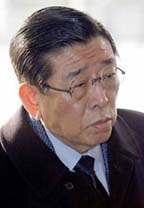
Deputy Director of the Republic of Korea Presidential Protective Forces, Kim, Un Yong was elected the president of the Korea Taekwondo Association on 23 January 1971. Though he initially declined the position due to the continued conflicts within the organization, he was asked by the Korean government to accept and to cleanse the association. Which he has had great success in accomplishing.
Believing that Taekwondo was a Korean martial art and its governing body should be based in Korea, Dr. Kim dissolved the relationship between the Korea Taekwondo Association and the International Taekwondo Federation.
In 1973 the World Taekwondo Federation was formed and Dr. Kim was elected its president. This organization has lead the martial art of Taekwondo into its status as an Olympic Sport.
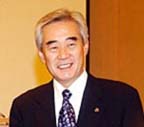
In 2004 Dr. Kim stepped down as WTF President due to an ongoing corruption scandal. After a trail held in South Korea he was also sentenced to a two and a half year prison term. In 2005 Chung Won Choue was elected the president of the WTF.
Taekwondo in the United States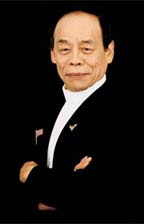
Taekwondo was introduced to the United States by Jhoon Rhee — who is known as the Father of American Taekwondo. He made his first journey to the States in 1956 in a Korean officer training program. After returning to Korea to finish his military service, he came back to the States in 1957 as an engineering student. In 1959, while attending the University of Texas in Austin, he needed income. Thus, he became the first instructor to teach the art of Taekwondo to American students in the United States. Today, in his sixties, he is still a very active instructor and proponent of Taekwondo.
For a more complete history of the evolution of the Korean Martial Arts: The History of Hapkido, Taekwondo, and the Korean Martial Arts.
Source: Interviews with First Generation South Korean and Japanese Practitioners of the Modern Martial Arts; 1972 to present.
Copyright © 1979, 1982, 1987, 1993, 1994, 1996, 1997, 1998, 2001, 2004
All Rights Reserved
No part of this may be reproduced in any manner without the expressed permission of Scott Shaw or his representatives.